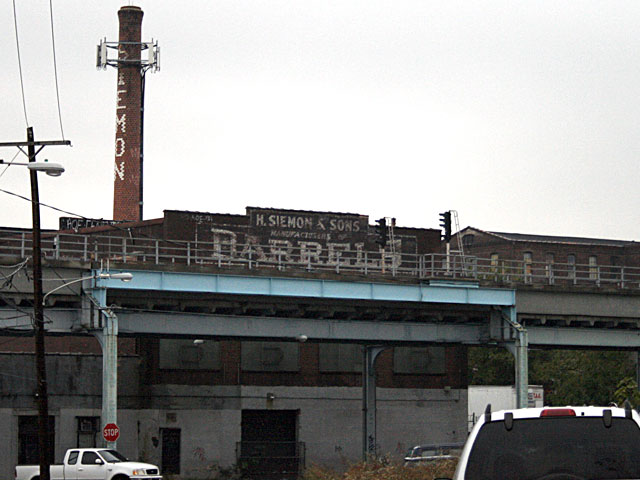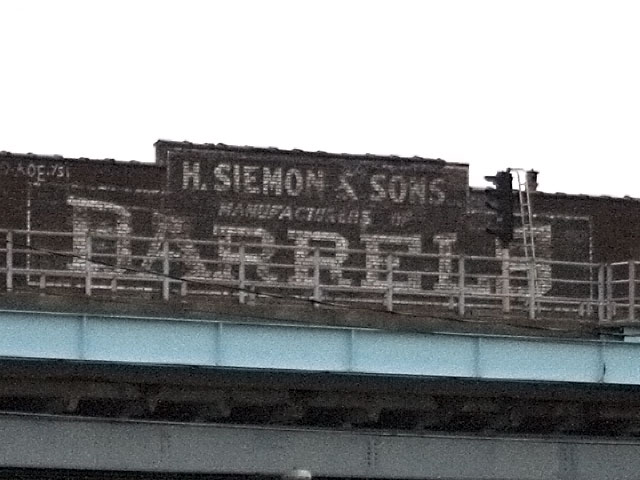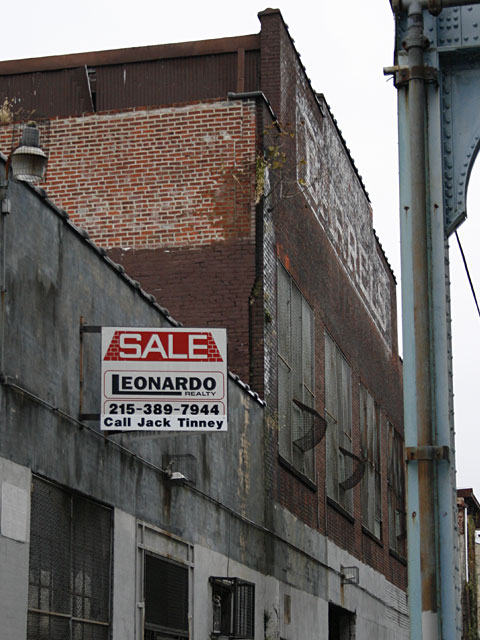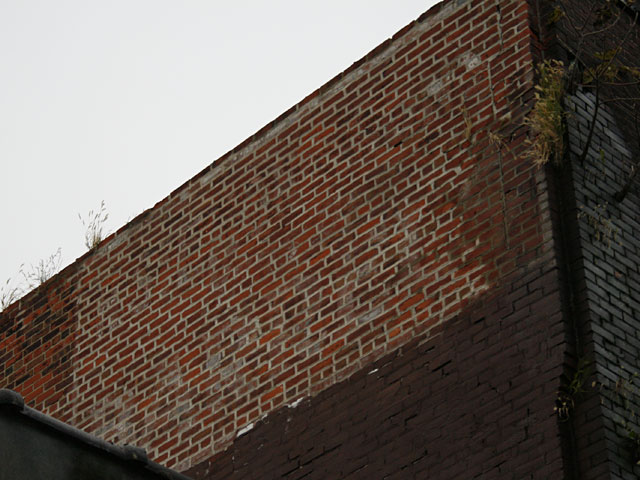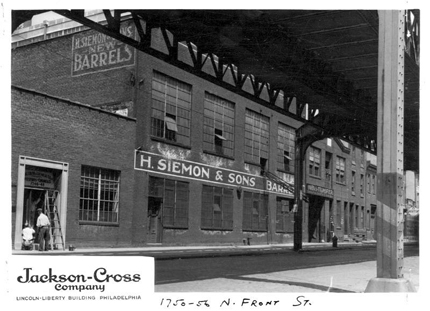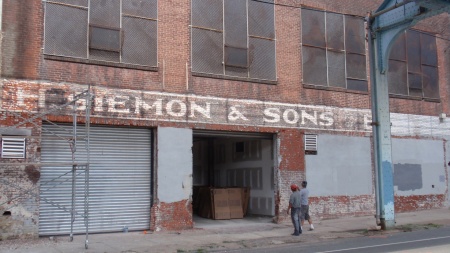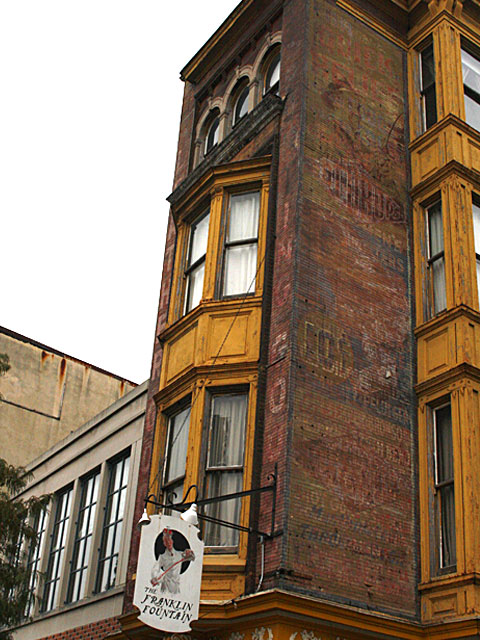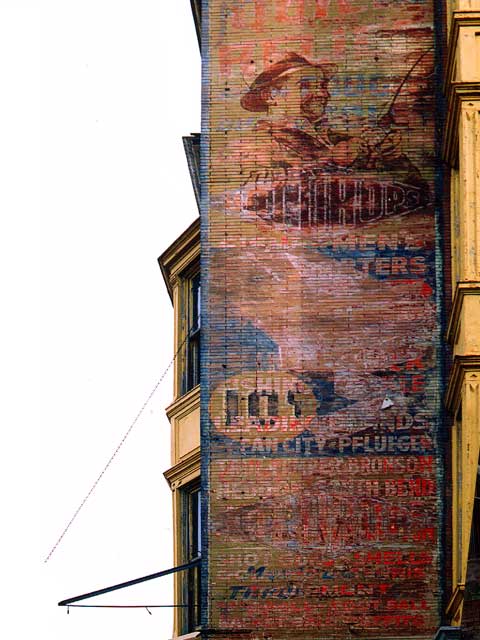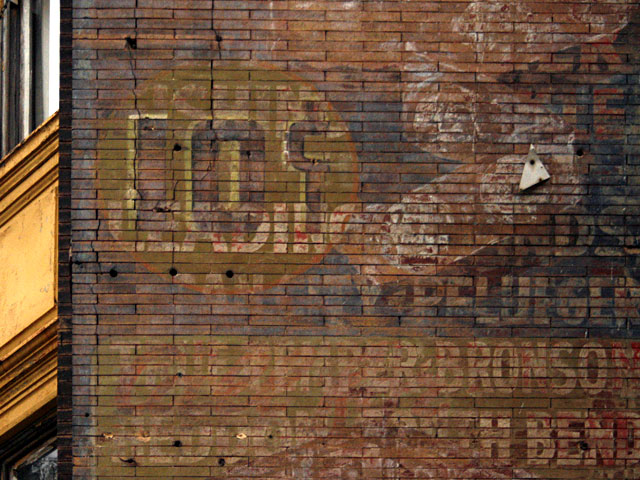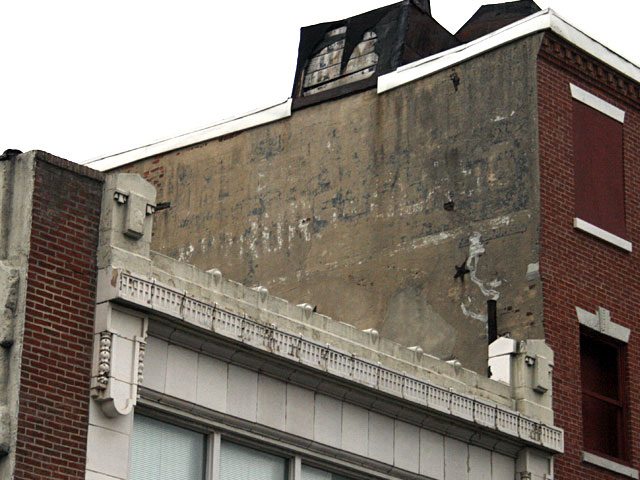
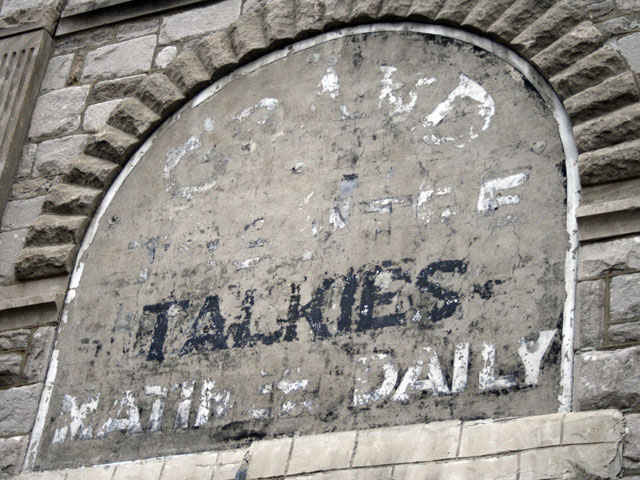
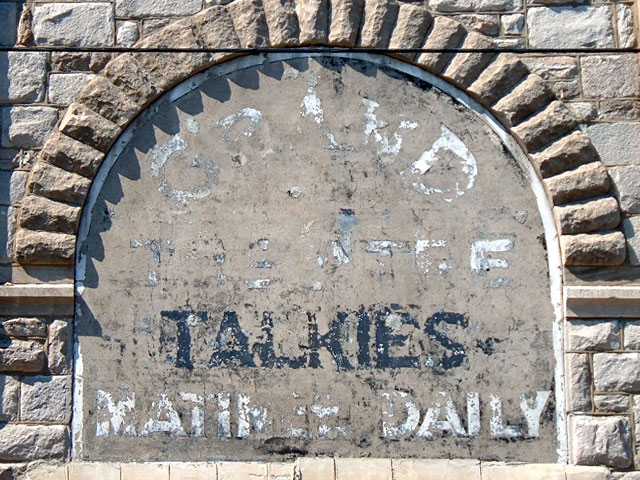 "Grand Theatre - TALKIES - Matinee Daily"
"Grand Theatre - TALKIES - Matinee Daily"
Sign over Snyder Avenue entrance.
At some point, probably as the term grew out of fashion, "TALKIES" was painted over in black, to hide it in the (then) black background of the sign.
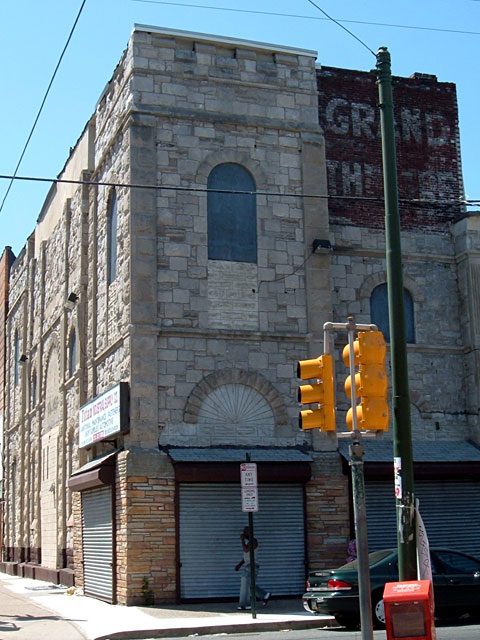
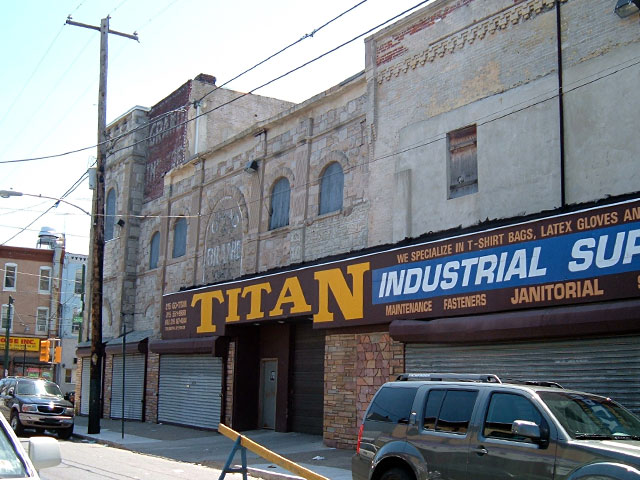
Additional signage on 7th, with some painted/boarded over.
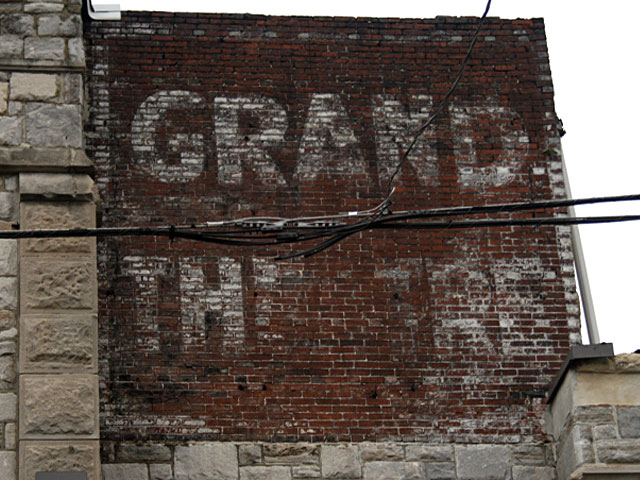
Closeup of painted brick sign, facing east, on 7th.

"Grand Theatre - Direction"
Sign over 7th Street entrance.
Note GRAND painted over THEATRE.
The Grand was originally the Synder Avenue Baptist Church. As the neighborhood changed before WWI it became a hall and eventually was converted into a moviehouse in 1911. Silent films were joined by vaudeville. Another renovation, by architect W.H. Lee, took place in the 1930s. The Grand had 850 seats and one screen, and was able to charge more than other local theaters because it had air conditioning. A retail store took over by the late 50's. Recent tenants removed the white aluminum siding that had covered the structure for decades to reveal most original painted signage still intact.
In this photo dated 1959, you can see the aluminum siding of John's Bargain Store (upper left) covering the theater facade:
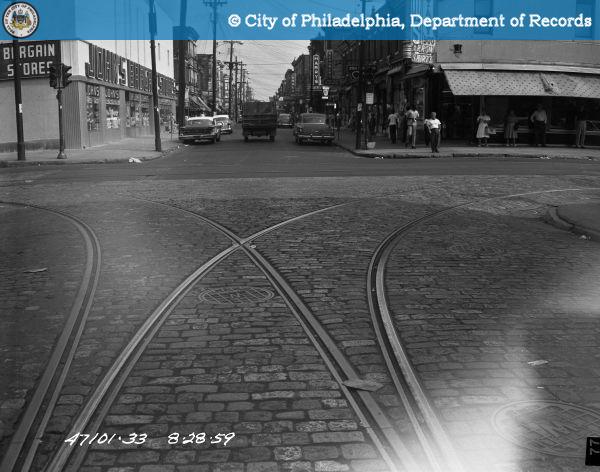
More photos here. More information on this theater here.
7th and Snyder Avenue.
Thanks to everyone who sent this in, and to Anthony DiFlorio for allowing me to post some of his photos!
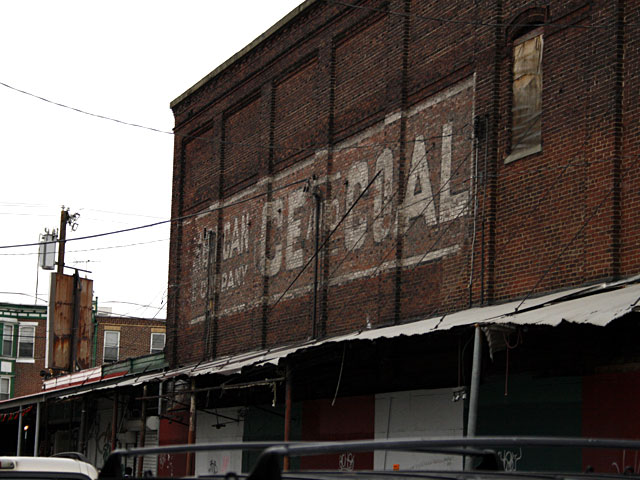

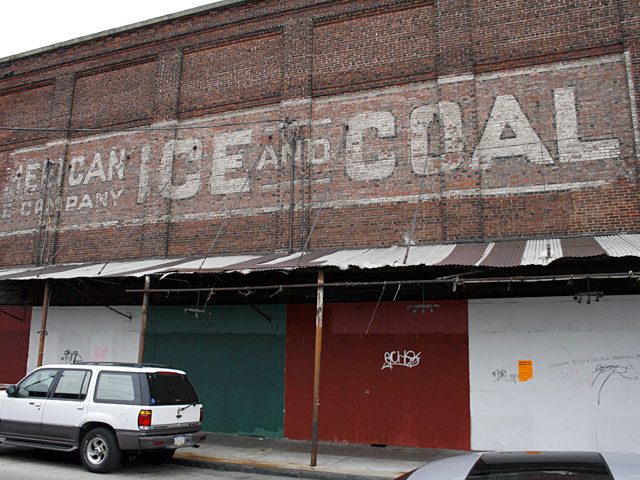
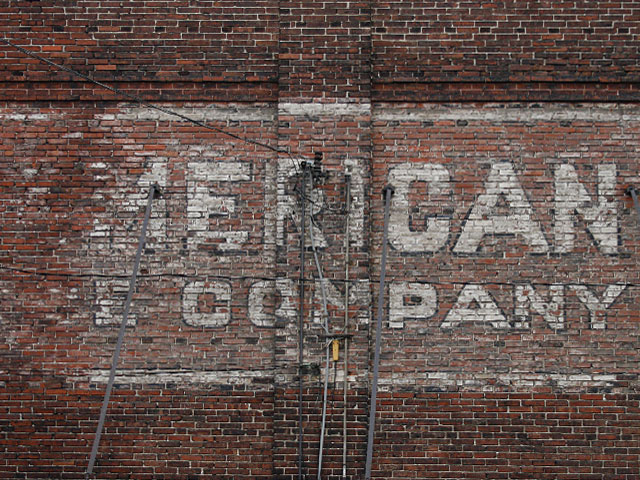
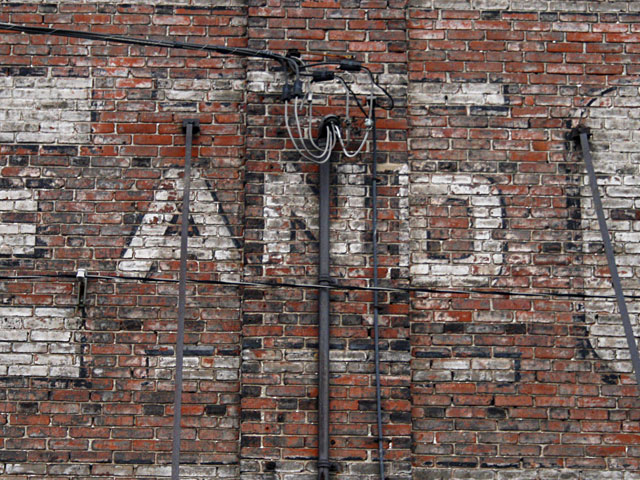
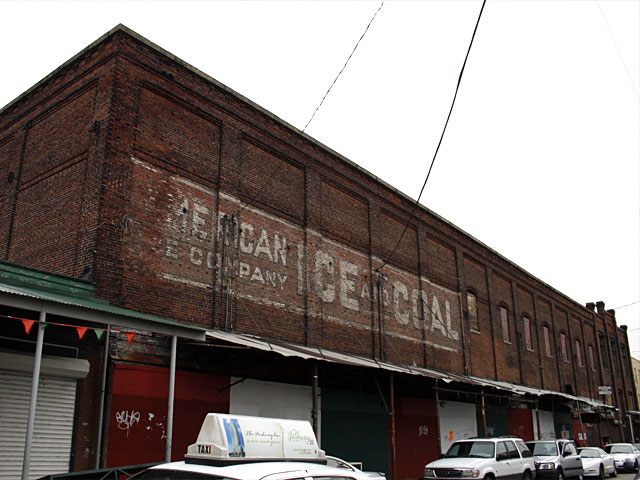
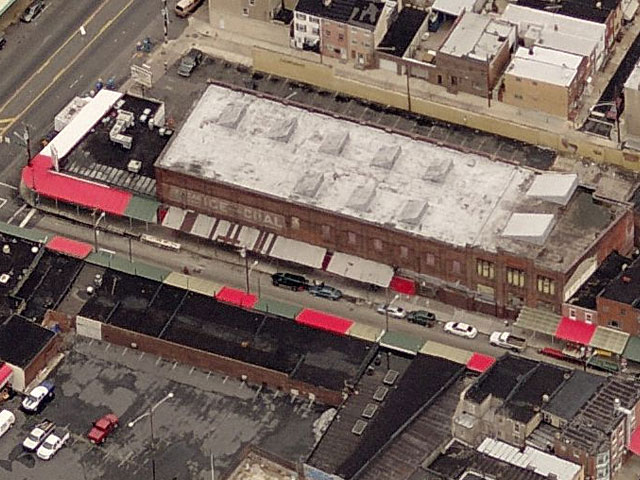 "American Ice Company ICE and COAL"
"American Ice Company ICE and COAL"
Captured just in time.
Dating back at least 100 years (listed on 1875 atlases as the Knickerbocker Ice Co.), the icehouse was one of three in the Italian Market area alone, and stood as a reminder of the pre-refrigeration and pre-electricity era. The iceman would haul large blocks of ice on a horse-drawn carriage (and later in a truck) to businesses and homes, chiseling off pieces to fit in the icebox. The American Ice and Coal Company also supplied many of Philadelphia's once-numerous local breweries. Similarly, coal carriages and trucks ran down the alleys behind homes, delivering coal through each house's chute that emptied into rowhouse cellars. Abandoned for 40 years, the interior of the structure was so deteriorated that the building could not be rehabbed. The Redevelopment Authority designated the blocks around the icehouse "blighted" in order to condemn the structure. The icehouse was demolished in January 2008.
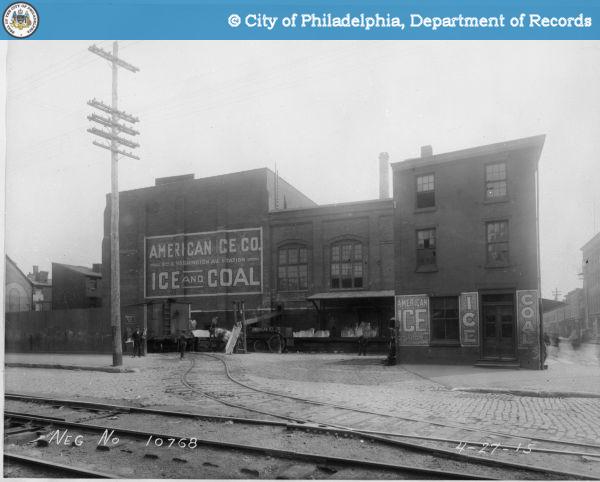
View, looking southeast, at other buildings in the complex, 1915. These no longer stood at the time the photos at top were taken.
PhillyHistory.org. Philadelphia Department of Records. 27 November 2007. <http://www.phillyhistory.org>.
9th and Washington Avenue [map]
Thanks for the tip, Laura!
This blog focuses on remnants of advertising and signage from a different period as they appear today. Here are some great photographs from the Philadelphia Department of Records showing signage as it was, long before some would become ghosts.
I found these via PhillyHistory.org, a mapping website that allows users to search for, view by location, and purchase thousands of historic photographs dating back to the late nineteenth century.
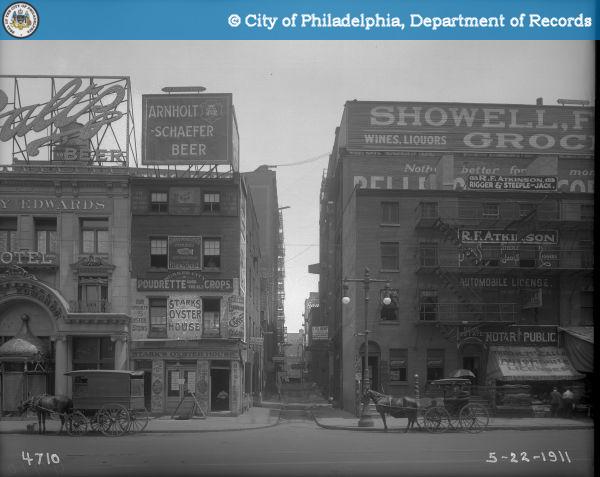
15-21 and 100 N Juniper Street, 1911
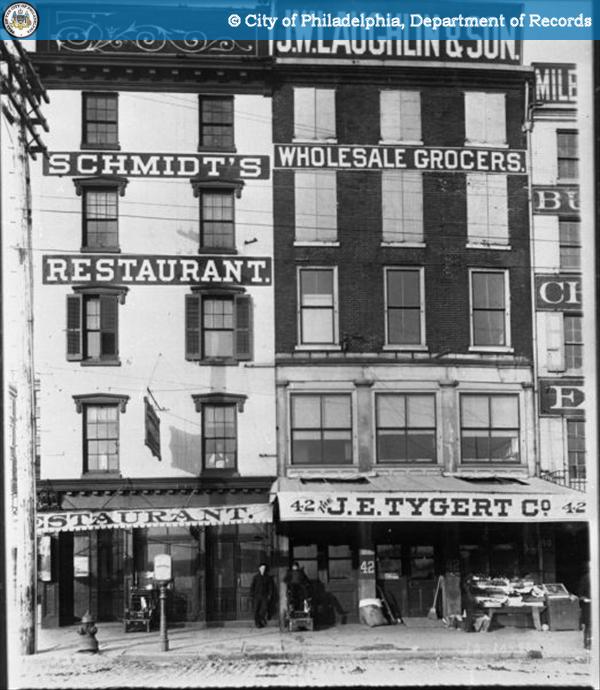
42-44 S. Delaware Avenue, 1898
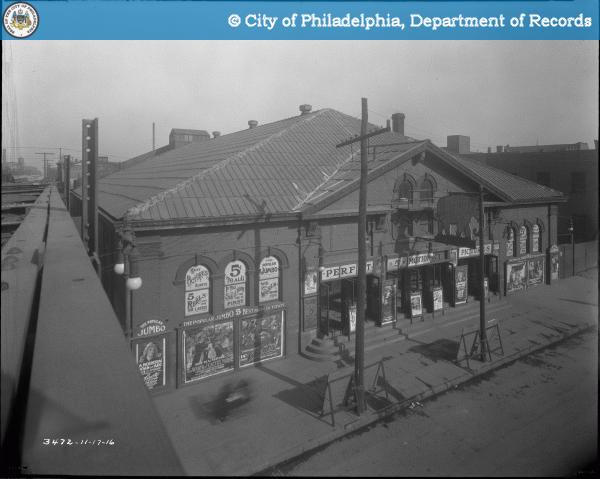
Front and Girard, 1916

143 Front Street, 1918
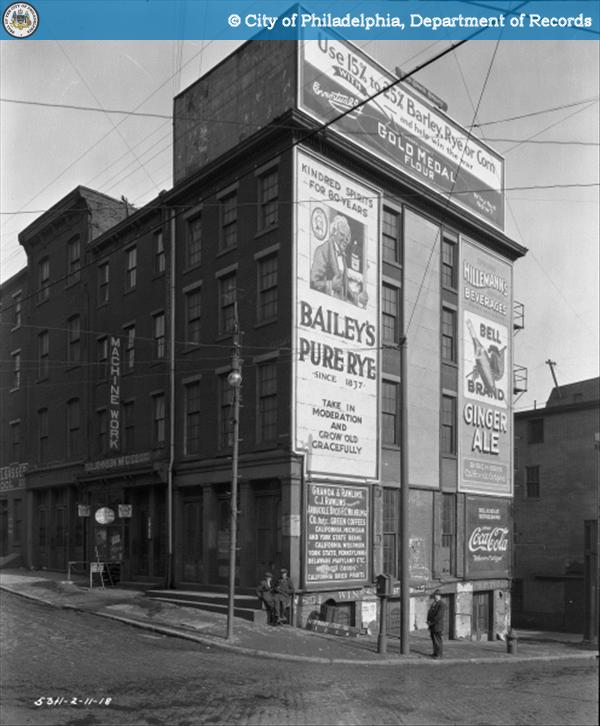
Front and Arch, 1918

Ridge and Callowhill, 1930

Market and Water Streets, 1953
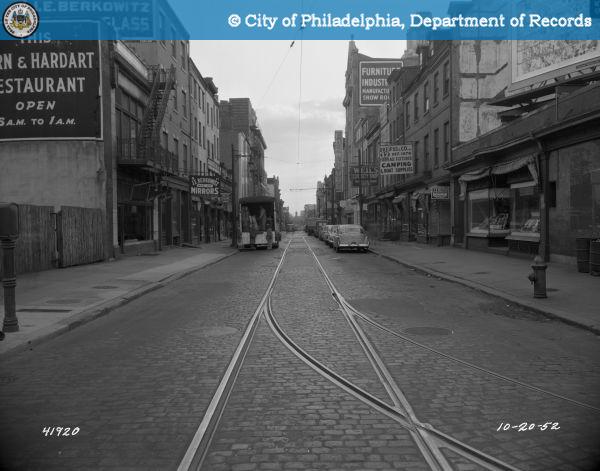
Front and Market Streets, 1952
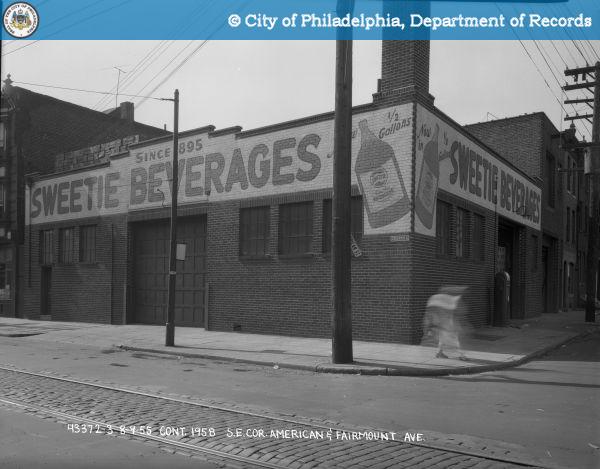
American and Fairmount, 1955
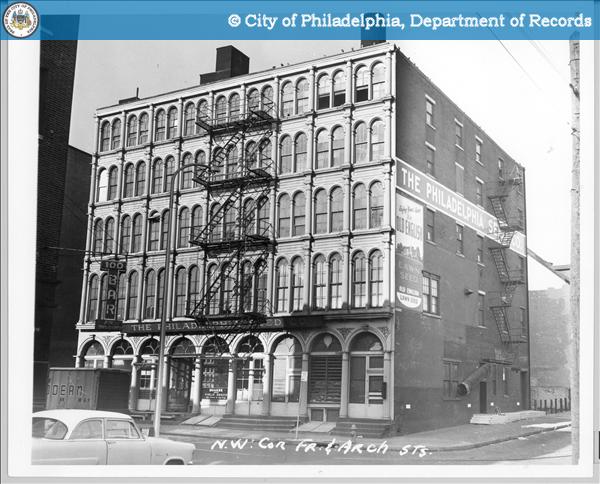
Front and Arch Streets, 1959
PhillyHistory.org. Philadelphia Department of Records. 18 November 2007. <http://www.phillyhistory.org>.
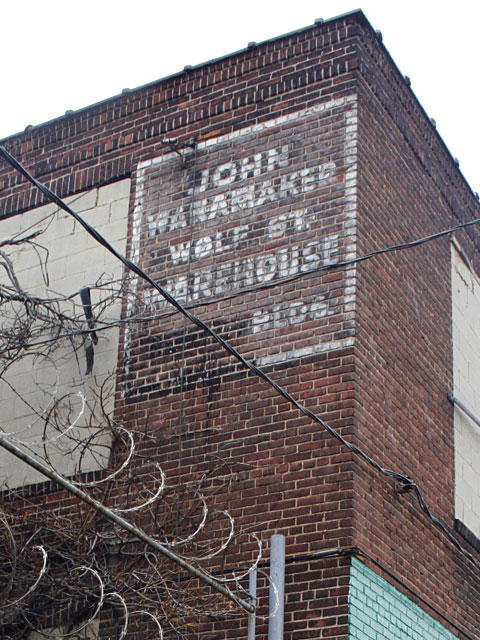 John Wanamaker Wolf St. Warehouse
John Wanamaker Wolf St. Warehouse
"??? Bldg." - blotted out with black paint
Wolf Street between Water and Swanson
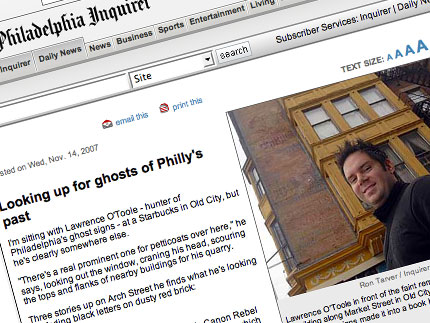 I was interviewed by Philadelphia Inquirer metropolitan columnist Dan Rubin about this Philly Ghost Signs Project blog. It was really fun, and has renewed my interest in seeking out and capturing more signage around Philadelphia. The article even made the front page of the Inquirer online!
I was interviewed by Philadelphia Inquirer metropolitan columnist Dan Rubin about this Philly Ghost Signs Project blog. It was really fun, and has renewed my interest in seeking out and capturing more signage around Philadelphia. The article even made the front page of the Inquirer online!
If you've arrived here from the links in the article, welcome! If you haven't, you can read the full article here. (LINK NO LONGER ACTIVE)
If you have any tips or information on signs that you know about, please send me an email via the link at right. Thanks for looking!
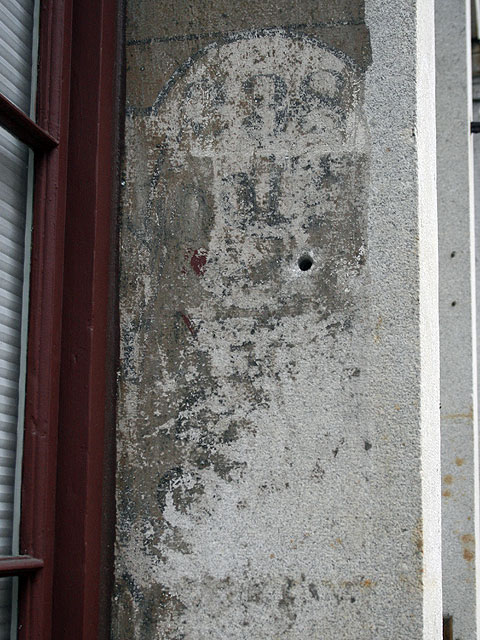 Address plaques painted on the stone columns of the building. Only the address numerals remain visible, the lettering below has been either worn away or removed. Most likely listed the business services or goods offered by the building's occupants.
Address plaques painted on the stone columns of the building. Only the address numerals remain visible, the lettering below has been either worn away or removed. Most likely listed the business services or goods offered by the building's occupants.
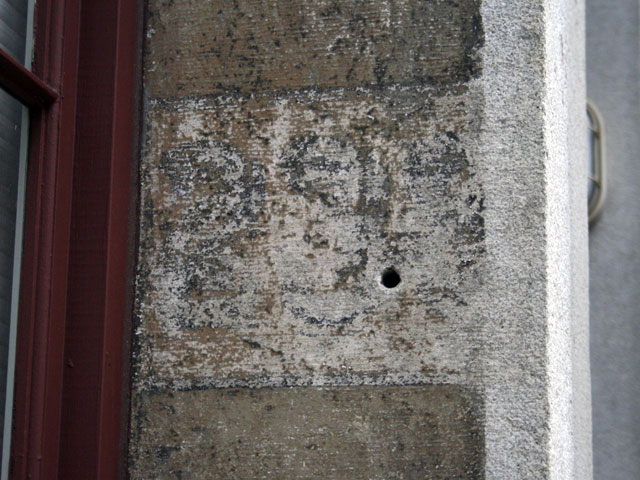
This one is similar to the Nathan Trotter columns.
3rd and New Streets [map]
